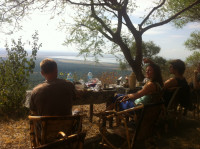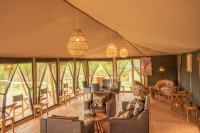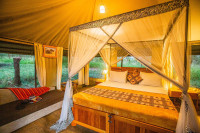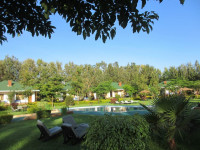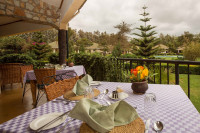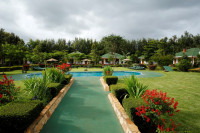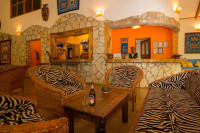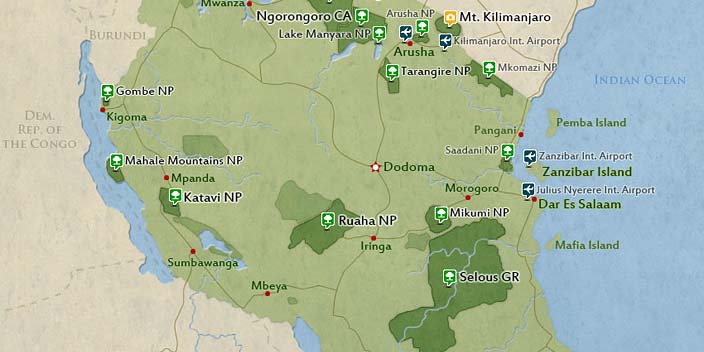
$1,692 pp (USD)
2 travelers on Start dateArrival
Arrival

Day 1
Moshi town to Lake Manyara National Park
Moshi town to Lake Manyara National Park
After breakfast drive to Lake Manyara National Park. The first view as you approach Lake Manyara National Park is very spectacular, regardless of direction. When you approach it from the east, the Rift Valley escarpment looms on the horizon forming impressive backdrop to the lake. If you come from the west and pause at the top of the escarpment, the park lies in a green strip below you and the lake glistening in the sunlight.
You will be able to see tree climbing lions which are the park’s main attraction. Why these lions habitually climb trees is still up for debate but viewing a pride relaxing in an acacia tree is an incredible site. The park is also famous for its elephant, huge number of baboons and due to its varied landscape has an impressive range of other game including wildebeest, buffalo, hippo, Leopard, flamingo, zebra, warthog, waterbuck, dik-dik, and impala. This small park is also home to over 400 species of birds, including flamingos, pelicans, storks and cormorants.
- Main Destination:
- Lake Manyara National Park
- Accommodation:
- Panorama Safari Camp
- Meals & Drinks:

Day 2
Lake Manyara National Park to Serengeti National Park
Lake Manyara National Park to Serengeti National Park
After breakfast, transfer to Serengeti National Park. The park is teaming with wildlife and it is thought that over 3 million large mammals roam the plains. The extensive grasslands are interspersed with “kopjes” – which are rocky outcrop islands in the flat plains, each with its own wildlife communities. Picnic lunch enroute.
The park is famous for its endless plains and the savannah vegetation that it owns, balloon safari and been the richest park full of wildlife and birdlife elsewhere in Africa. The park also supports many species of wildlife including Lion, African Leopard, African Elephant, cheetah, African Buffalo, Thomson's and Grant's gazelle, topi, eland, water buck, hyena, baboon, impala, African wild dog and giraffe. The park also boasts about 500 bird species, including ostrich, secretary bird, Kori bustard, crowned crane, marabou stork, martial eagle, lovebirds and many species of vultures.
- Main Destination:
- Serengeti National Park
- Accommodation:
- Tukaone Hembe Camp
- Meals & Drinks:

Day 3
Sunrise adventure in Serengeti National Park to Ngorongoro
Sunrise adventure in Serengeti National Park to Ngorongoro
It is the migration of large mammals for which Serengeti is perhaps most famous. Over 1.5 million wildebeest and about 400,000 zebras take part in this migration which essentially involves three famous and important protected areas – Serengeti and Ngorongoro in Tanzania and the Masai Mara reserve in Kenya.
It is a clockwise migratory movement, during which sequence, the animals start arriving at the eastern Serengeti short grass plains in late November – December where calving of the wildebeests takes place. At the end of the long rains, the migration heads westwards and then turns north to arrive in Masai Mara reserve in late August –September. Lunch at the lodge. Afternoon transfer to Ngorongoro and game drive enrote.
The park supports many species of wildlife including Lion, African Leopard, African Elephant, cheetah, African Buffalo, Thomson's and Grant's gazelle, topi, eland, water buck, hyena, baboon, impala, African wild dog and giraffe.
- Main Destination:
- Ngorongoro Crater
- Accommodation:
- Country Lodge Karatu
- Meals & Drinks:

Day 4
Morning adventure on the Ngorongoro crater floor (home of the big five) - Moshi
Morning adventure on the Ngorongoro crater floor (home of the big five) - Moshi
The animals here are not trapped, but there are some migratory movements in and out of the crater. Because of the protected nature of the habitat and the availability of grazing pastures and water, much of the animal population has become resident year round. This makes Ngorongoro an ideal area for game viewing.
Ngorongoro Crater is the 8th wonder of the world. It hosts an estimated 30,000 large mammals on its floor, including large herds of buffaloes, wildebeests, elands, hartebeest elephants, hippos, lions and the endangered black rhino. The crater being 12 miles wide 2,000 feet deep, and covering an are of 102 square miles, it is the largest intact volcanic crater on the earth. Picnic lunch at the crater floor, afternoon game drive on the crater floor. Late afternoon transfer to Kilimanjaro International Airport to connect with your flight back home.
- Main Destination:
- Ngorongoro Crater
- Accommodation:
- No accommodation (End of tour)
- Meals & Drinks:














